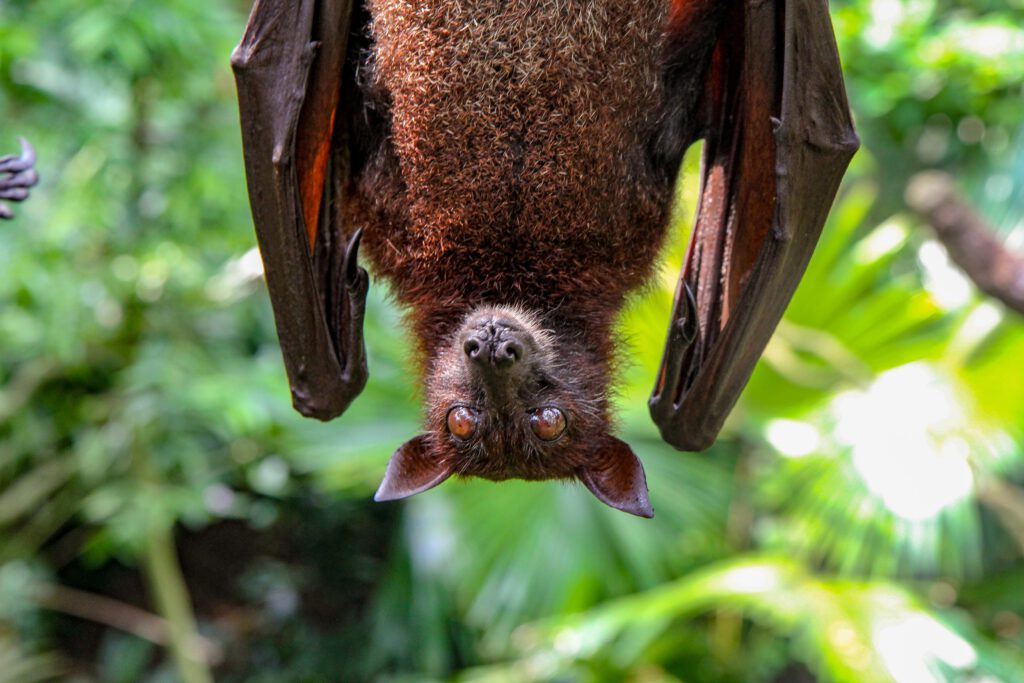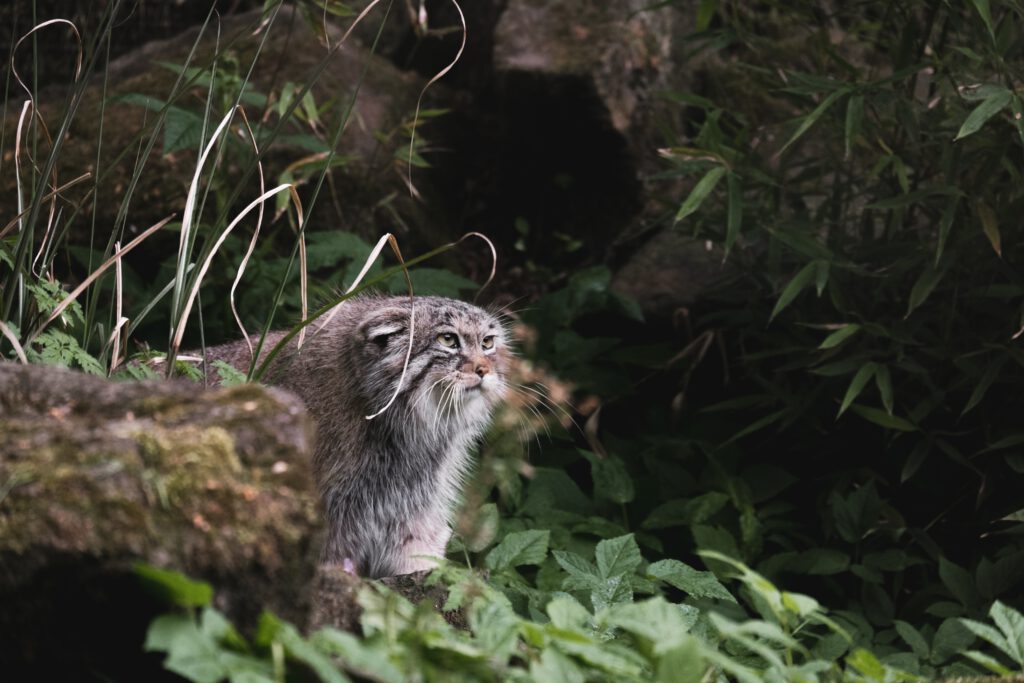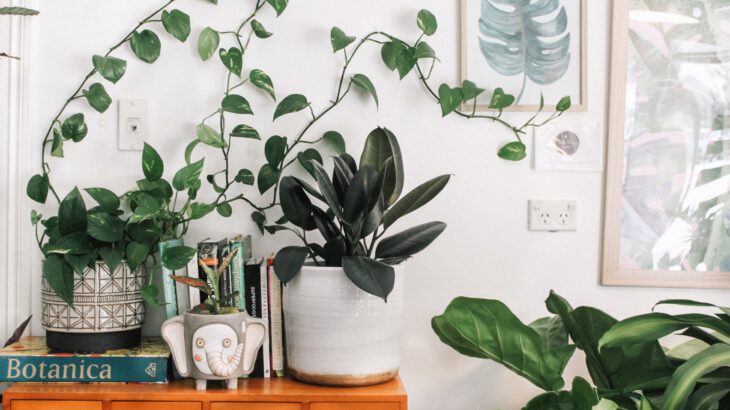Green Calendar April: Part 2
Welcome to the second instalment of April’s green calendar! In this post, we will appreciate plants and bats, and celebrate the Earth and Pallas cats. (Do forgive my poor attempts at a rhyme.) Anyway, grab your calendar, and let’s get going!
13 April – International Plant Appreciation Day
Today is the day to appreciate our green friends. It is the perfect time to bring home a new houseplant, or if you have a garden, maybe even plant one. Writing about the benefits of plants seemed like preaching to the choir (all of us appreciate plants…right?), so instead I decided to list a few interesting facts. Which one(s) caught you by surprise?
· Algae are responsible for the production of over 70% of the Earth’s oxygen production. They make up 20% of the oxygen in the biosphere – more than all the rainforests on land combined.
· Gingko (scientifically, Ginkgo biloba) is one of the oldest living tree species, dating back to about 250 million years ago. This species saw dinosaurs – feel young yet?
· During the 1600s, tulips were unbelievably valuable here in the Netherlands, to the point that their bulbs were worth more than gold. This craze, called ‘tulip mania,’ crashed the Dutch economy.
· Bamboo is the fastest-growing woody plant in the world and can grow up to 35 inches a day.
· Strawberries are the only fruit that bears its seeds on the outside.
However, not all facts are fun.
· Thanks to human intervention, 80% of the Earth’s original forests that dominated the globe for the last 8,000 years are now gone.
· Only 10% of the world’s most biodiverse areas are officially protected.
· More than half of all plant species are native to a country and its neighbours – if we lose them there, we lose them everywhere.
· Plant species are going extinct thousands of times faster than they should.
What can I do?
· Bring home a plant, preferably a native one. You can buy your plant from the market, or even better, pick one up from Thuis. Keep in mind to ask how best to care for your new friend!
· Spread the love – gift your friend a plant.
· Check out the plant research being done by the university (https://research.wur.nl/en/organisations/wageningen-plant-research).

17 April – International Bat Appreciation Day
International Bat Appreciation Day was started by Bat Conservation International, an NGO founded in 1982 by bat Biologist, Merlin Tuttle, to preserve bats and their habitats through conservation, education, and research efforts.
Bats are flying mammals of the order Chiroptera. Their forelimbs are adapted to wings, making them the only mammal capable of true, sustained flight. In fact, bats are more agile in flight than most
birds! They make up the second largest order of mammals (after rodents), and compromise of about 20% of all classified mammal species. That’s over 1,400 species!
Unsurprisingly, there is huge diversity in their size and habits. Kitti’s hog-nosed bat (the world’s smallest mammal) is only 29-24 mm in length with a 15 cm wingspan, while the giant-golden crowned flying fox has a wingspan of 1.7 m and can weigh up to 1.6 kg!
They are nocturnal, with many species roosting in caves or other refuges. You must have seen them hang upside down from their hindlegs while resting. Why do bats do this? Scientists theorise bats have to fall into flight, which makes hanging upside down the best way to escape quickly.
Most bats are insectivores (insect-eaters); the remaining are either frugivores (fruit-eaters) or nectarivores (nectar-eaters), with a few species being sanguivores (blood-eaters). So, yes, certain bats do drink blood.
Bats are commonly classified as microbats (the insectivores and sanguivores) and megabats (the frugivores and nectarivores). While microbats use echolocation to locate objects, megabats have larger eyes and a stronger sense of smell. (They have smaller ears because they don’t echolocate.)
They play a significant role in ecosystems by pollinating flowers and dispersing seeds. In fact, more than 500 plant species, including mangoes, bananas, and avocados, depend on bats for pollination. On the other hand, insectivorous microbats consume millions of bugs nightly and function as natural pest control for plants.
What can I do?
· Try to locate the “bat cave” on campus. Designed by Krijn Geizen, this bat cave made of surplus paving materials is a shelter and hibernation place for flora and fauna. (The location will be revealed in the next post.)
· Go bat-watching. Find a spot where bats are known to live and spend a quiet evening watching them fly around at dusk and hunt for food. Be sure not to get too close and disturb them! Also, leave the area just as you found it.
· Create a bat habitat with a box to provide a safe space for bats to live.

22 April – Earth Day
Earth Day is an annual celebration honouring the achievements of the environmental movement, while also raising awareness of the need to protect the Earth and its natural resources for the present and future generations. A little-known fact is that there are actually two Earth Days, and this is the second one. The other Earth Day, also called equinoctial Earth Day, is celebrated on (you guessed it!) the March equinox, that is, around 20 March, to celebrate the arrival of astronomical spring in the Northern Hemisphere.
Back to the current Earth Day (the April one) – it was founded in 1970 as the brainchild of US Senator Gaylord Nelson as a day to educate people, especially students, about environmental issues. Rallies took place across the United States, and by the end of the year, the U.S. government had created an Environmental Protection Agency. By 1990, over 140 countries around the globe celebrated Earth Day.
What can I do?
· Plant native flowers that attract bees and other pollinators.
· Choose a route and pick up all the rubbish you see along that route. (Bonus points if you segregate the waste and throw everything in the right trash bin.)
· Follow the Rs – recycle, refuse, reduce, reuse, repair, re-gift and recover.
If you ever feel like an individual’s actions cannot have a sufficient impact, just remember:
· Throughout its lifetime, one reusable bag can prevent the use of 600 plastic bags.
· Recycling one can of beer saves enough energy to power a TV for three hours.
· Shutting down a computer when not in use cuts its energy consumption by 85%.
And all of these are changes YOU can enact.

23 April – International Pallas Cat Day
Also known as the manul, steppe cat or rock wildcat, Pallas cats are well-furred cats from the cold Asian steppes. Their range extends across Iran, Afghanistan, Pakistan, Northern India, China, and southern Russia. They live in abandoned marmot burrows and rock cavities on grasslands.
While the species is currently listed as Least Concern in the IUCN Red List, their population is declining. These small creatures are threatened by habitat fragmentation (due to overgrazing by livestock and conversion to arable land), mining, prey depletion, hunting for fur, and demand as exotic pets.
What can I do?
· How about taking a break from work/studies and making a Pallas cat origami? You can find the guidelines here: http://pallascats.org/wp-content/uploads/2019/06/Origami.pdf. · Learn more about this wonderful cat (http://pallascats.org/wp-content/uploads/2021/06/201705_Pallass-Cat_11-LEAFLET-ENG-low-res.pdf).
· Spread awareness. Let the world know about this beautiful species.

Written by: Shirsho Roy Chowdhury
